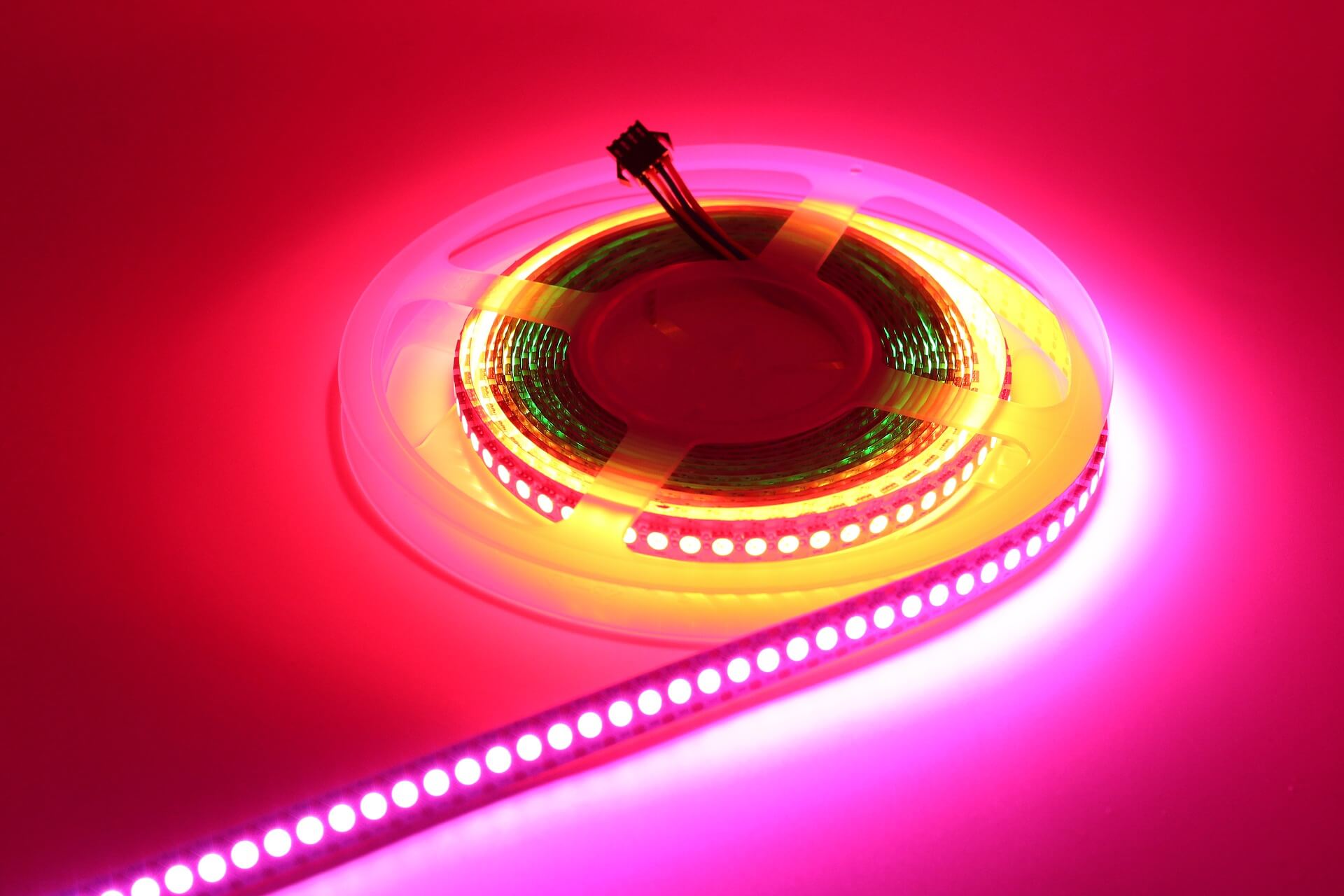LED Strips are an ideal lighting option for effect and accents in minimal spots. They are easy to install and have controls that make them dimmable. In addition, they provide a fully diffused long-lasting, glow for secondary lighting like under the kitchen cabinets, inner corners of wardrobes, garages, etc.
The LED strip is made with a flexible linear base that allows quick and easy installation into the desired spot. LED strips are very versatile as you can cut them into small pieces. These lights generate less heat which makes them safe by reducing the threat of starting a fire. It became popular due to its durability, unlike the traditional light bulbs.
How To Power a LED Strip
Before powering your LED strip, check for the total wattage because it has to be 20% less than your power supply’s rated wattage. This is why it’s not ideal to power your strip with a USB. Each LED strip’s operating voltage is usually listed between 12V to 24V which, is more than USB ports’ voltages that are typically 5V or less. Don’t connect your LED strip directly to a battery or power supply. The wattage (W) or amperage (A) is commonly printed on the bottom of the strip. Once you’ve determined your LED strip’s voltage, the next step is to pick your LED power supply.
There are different LED power sources available for use. A LED power supply with constant voltage power is an ideal option. It has resistors and embedded current drivers that serve as adapters for high power currents. Having a power supply higher than your LED strip’s voltage required is no cause for alarm, as it is the accepted compatibility ratio. The LED strip only absorbs the wattage it needs, and there’s no risk of overloading.
How To Choose Power Supply for LED Strip
LED strips require constant voltage input to work at maximum capacity. Your Power Supply is based on the length and type of LED strip light you’re using. So the first thing to do is determine the voltage input of your strip, then check the number of watts per foot your strip consumes. The adequate wattage input produces stable, bright lights instead of dim, flickering ones.
After figuring out the wattage, the next step is to calculate the estimated power usage. This is the LED strip voltage per foot (e. g. 5W/ft x 12ft = 60watts). Remember you’re to use 20% less power than your supply which means your power supply is 80% more than your LED strip wattage. So, to determine the compatible power supply for your LED strip light, divide your estimated power usage by 80%( e. g. 60W/0.8 = 75W). So, your power supply in this instance should produce 75 watts.
LED strips that come without DC plugs should be connected to adapters. However, to avoid overloading from power surges, they should not be connected directly to the wall outlets of the power supply. This is because the Alternating Currents can damage the strip or shock you at worst!




